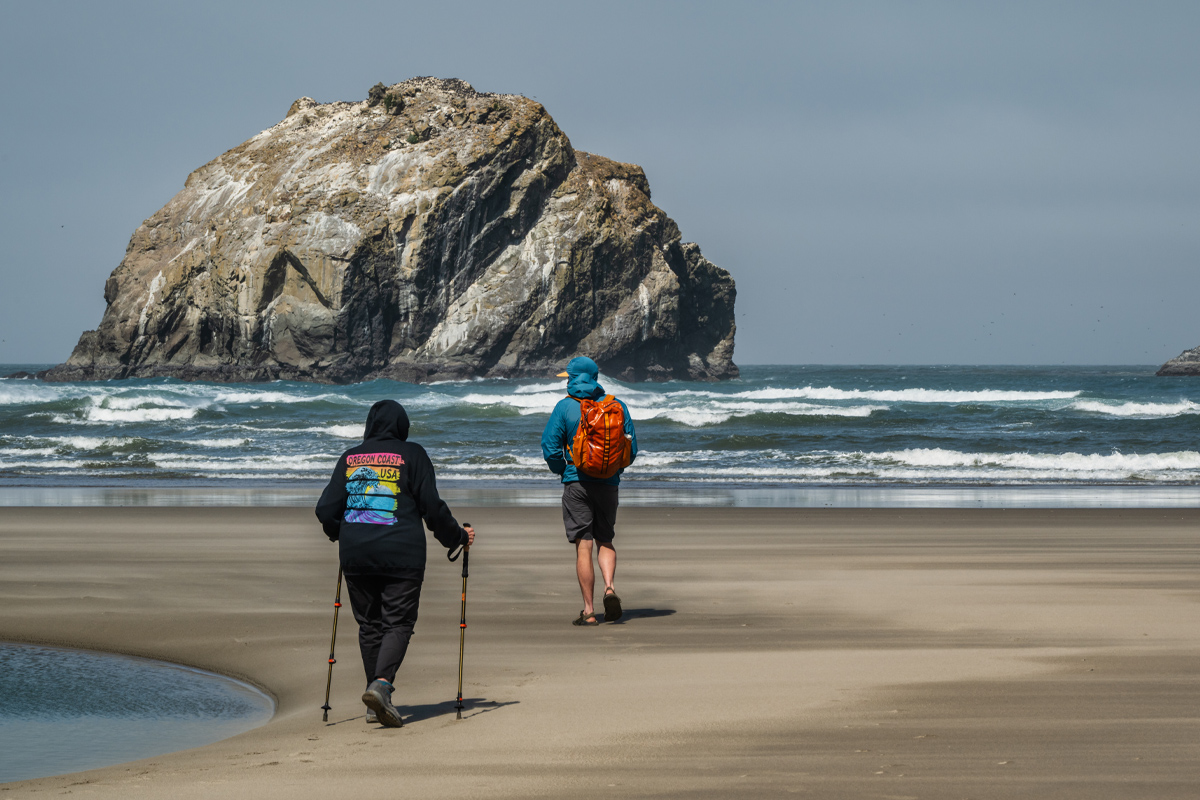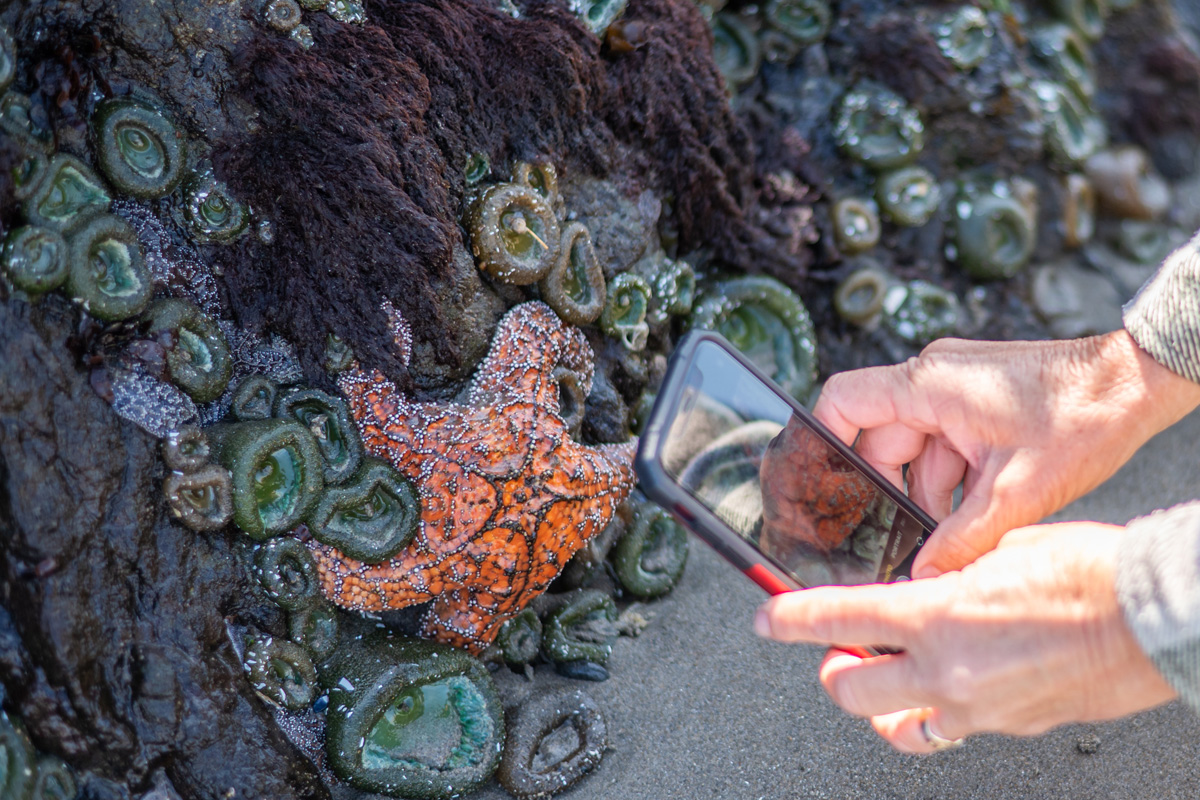Partner Story
Experience the geological wonder and wildlife of Bandon’s collection of rock formations.
A visit to Bandon on Oregon’s South Coast is not complete without taking some time to experience its sea stacks and beach rock formations. Like ships in the sea, these geological wonders appear to float across the ocean and sand, exciting the imagination of generations of beachgoers. And, in fact, many of Bandon’s rocks carry histories and stories to tell, from prehistoric geological processes to tribal legends. Here’s what to know about Bandon’s iconic rock formations and how to experience them for yourself.

Rocks With a Storied Past
Bandon’s rocks are remnants of a melange of geological material from far-flung locations, brought together through the process of subduction (when one tectonic plate slides below another) millions of years ago. This process created a dizzying mixture of rocks of various types, and now only the most resistant material remains. Ocean waves, wind and weather have worn down the rest, leaving the oddly shaped pinnacles you see today — each with its own storied past.
Many of the rocks, also known as sea stacks, are named and are culturally significant. Elephant Rock resembles the face of an elephant with two sea caves around its trunk forming the ears, while Table Rock, with its flat top, looks unsurprisingly like a table.
However, perhaps the most famous is Face Rock. According to Coquille tribal legend, Ewauna, daughter of Chief Siskiyou, was captured by Seatka, the evil spirit of the ocean, during a fateful night of swimming. In order to avoid Seatka’s powerful gaze, Ewauna turned her face toward the heavens, where her eyes remain affixed today. Her dog, Komax, who tried to warn Ewauna, is also frozen in time, continuously crying to his companion as Howling Dog Rock.

More Than One Way to See a Sea Stack
One of the best ways to experience Bandon’s sculptural rocks is on foot. With several access points along the coastline, hikers can walk a range of distances — hike Bandon’s Beachfront Islands for 3.3 miles of craggy rocks or a longer Bandon Beach hike for 7.4 miles of stacks, including legendary Face Rock and Wizard’s Hat. You can also walk the Oregon Coast Trail from the Coquille River South Jetty Trailhead to Devils Kitchen Trailhead to enjoy 4 miles of windswept beach and pass by all of Bandon’s iconic sea stacks.
Dog owners will be delighted to learn that all of Bandon’s beaches are generally off-leash-friendly, as long as the dog answers when called, except for seasonal closures on the beach south of Face Rock from March 15 to September 15, when snowy plovers are nesting.
Several overlooks and beach-access points offer scenic cliffside views without the need for long walks. Face Rock State Scenic Viewpoint provides the best vantage point for seeing its namesake rock, while Devils Kitchen Wayside offers a view of Haystack Rock. From Coquille Point, follow a short path for views of Table Rock and Elephant Rock in the distance. Just don’t forget the binoculars, as swarms of seabirds, including cormorants and murres, can be seen in the area, as well as tufted puffins that set up shop in the rocks from May to August. On the lower rocks, look for harbor seals sunbathing near the surf.

A Closer Look
If you get the chance, don’t skip a visit to Bandon’s rocks at low tide. From up close, you can see the colorful geology — dark blue-gray blueschist speckled with red garnets, multicolored banded chert and gray volcanic rock — as well as the many species these rocks host. Shiny, dark mussels and barnacles are plentiful, along with sea anemones and the occasional sea stars. Some of the rocks nearest to shore may even be circumnavigated, giving you plenty of space to explore.
Tide pools can be reached from both Face Rock and Devils Kitchen via trails down to the beach, but be wary of ocean conditions and check tide tables before you visit. Also, as the area is part of the Oregon Islands National Wildlife Refuge, people are prohibited from disturbing many of the sea stacks for any reason to protect bird life on these habitat islands, including tide pooling. Elephant Rock and other Coquille Point rocks are off limits, as well as Table Rock and Cathedral Rock. Be sure to practice good tide-pool etiquette and don’t walk on the many small animals that make this part of the ocean home.
Top photo by Manuela Durson